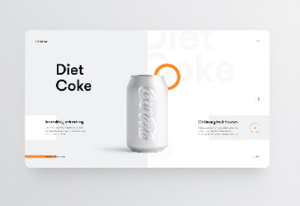Email Content
Design
Best practices for designing your emails

Designing for Email
To stand out in the digital world, your content should not only be engaging, well-formed, and strategic, but it must also possess an aesthetic appeal that conveys your professionalism and creativity. Emails should be designed for all device types (responsive design), have a clear visual hierarchy, and follow all requirements for ADA compliance. In this section, we will cover responsive design best practices, ADA compliance considerations, best practices for your header-footer template, and design trends for 2020.
Responsive Design
What is responsive design?
Responsive design means your email templates and content are coded and tested to render properly on all devices (desktop, tablet, mobile) and all major email clients like Google, Yahoo, Outlook, etc.
Think “mobile first”
75% of gmail users read their emails on a mobile device, and overall mobile device usage is increasing each year.
ADA Compliance
How can I be ADA compliant?
Consider smart devices and voice assistants when designing and coding emails.
- Live HTML text vs. flat text graphics
- Alt tags
- Brief, concise content
- Clear, visual hierarchy
- Legible fonts
Email Header & Footer Best Practices Checklist
1Build in a pre-header text section
Your email template should include a section for pre-header text before the branded header. This prevents HTML code from showing in inbox previews and expands on subject line messaging.

2Establish consistent branding in your header
Your emails should have a consistent branded header with your logo, business name, and a link back to your website. Design your header to complement campaign specific hero banners.

3Add social media links in header or footer
Depending on how active your social presence is, you will want to include icons in the header or footer to encourage your subscribers to connect with you on social media.

4Add footer links to relevant & useful information
Think about what information is relevant and useful to your readers, and include boiler plates or built in links to web pages like FAQ’s, Services, About Us, or Membership Benefits.

5Include contact info & preference options in footer
Follow legal requirements and best practices by ensuring your email footer includes your physical address, an unsubscribe link, and a link to your preference center.

2020 Email Design Trends

Futuristic Imagery

3D Imagery & Depth

Retro Design Elements

Organic & Fluid Shapes

Textured Illustrations

Abstract Typography & Layouts

Clean Design & Negative Space



